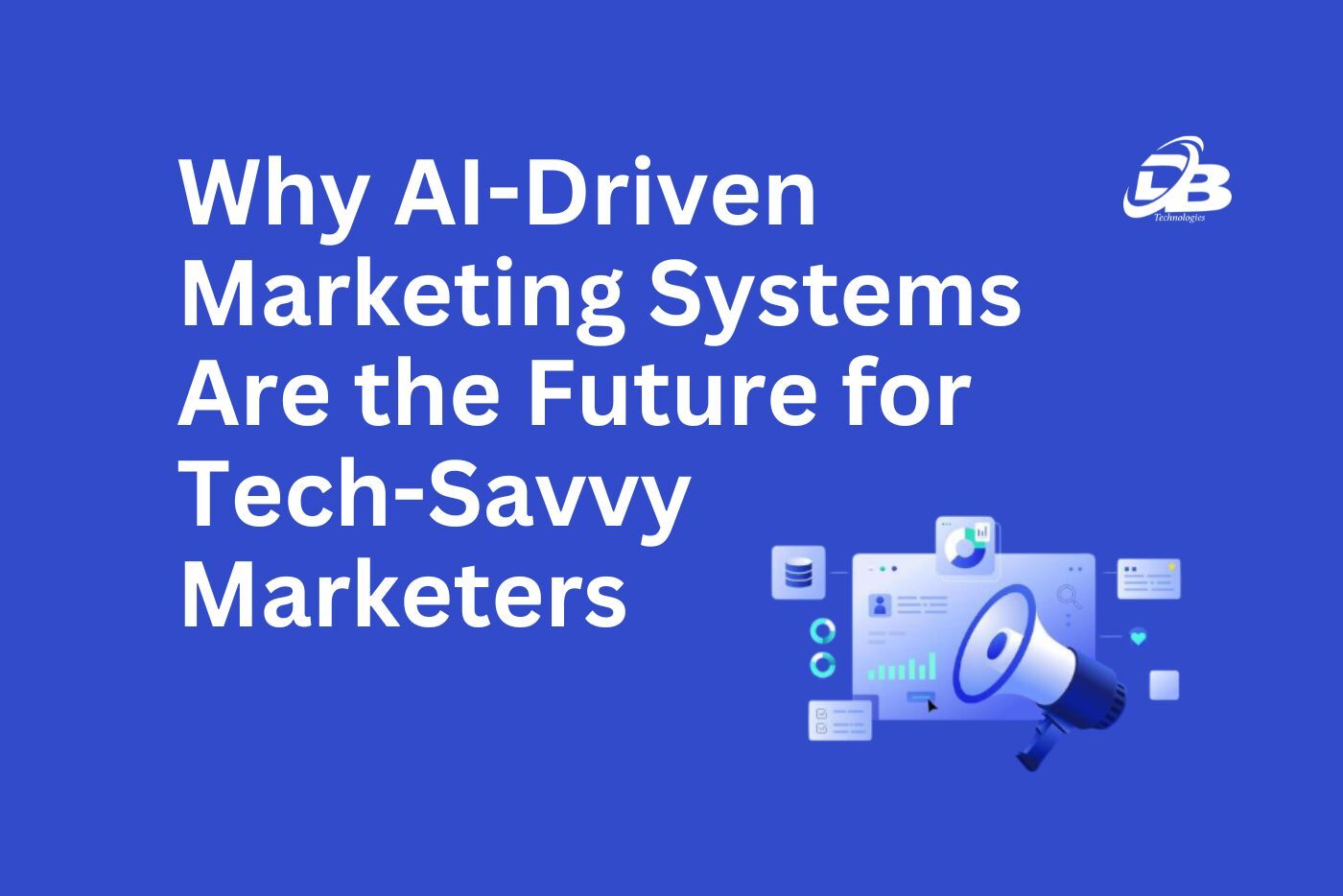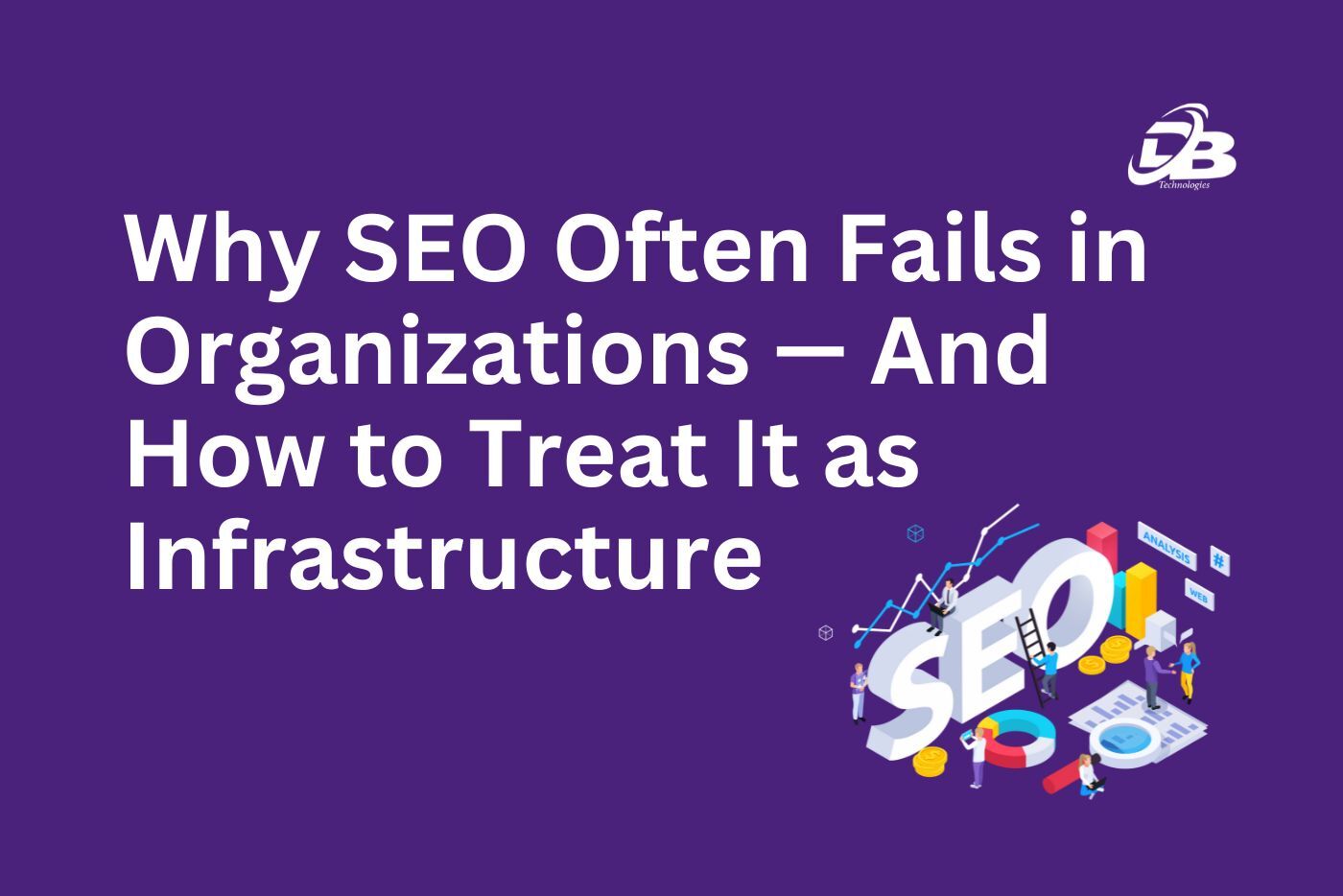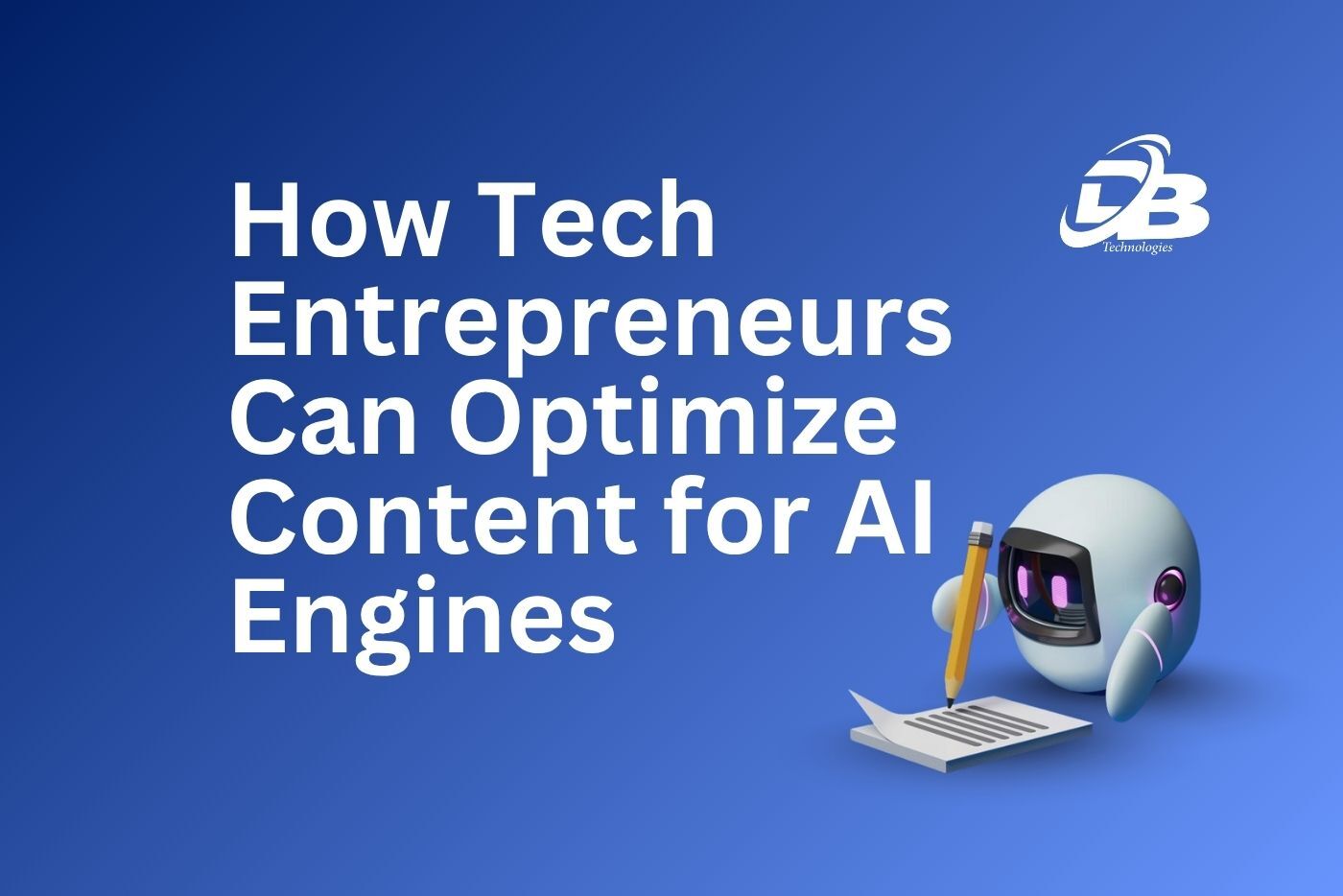
The truth is, if you’re a tech-savvy marketer today, you’ve probably reached with your current automation stack. You’ve mastered setting up email drip campaigns and scheduling social media posts.
The tasks are predictable and efficient, sure. But efficiency isn’t intelligence. You’ve got to ask yourself: Is your current system truly optimizing for profit, or is it just acting as a fast, obedient clerical worker?
The marketing world is experiencing a massive shift towards an “AI Driven Marketing” system. This progression leaves behind all inflexible rules and programmed routines, and advances to attractively designed systems that learn, adjust themselves, and offer deep insights for smarter, self-sufficient decisions.
This transformation isn’t a slow technological creep; it’s an absolute race. The numbers back this up: the global AI marketing revenue is projected to exceed $107.5 billion by 2028, growing at an expected Compound Annual Growth Rate (CAGR) of 36.6%.
This explosive growth in the marketing segment, contributing to a global AI market already valued at $244 billion in 2025 , signifies that the window for early adoption is rapidly closing.
Delaying the implementation of true AI-driven marketing systems means allowing competitors to pull ahead exponentially. Marketers who have already adopted these tools are seeing a marked improvement in the speed of their content creation on top of tangible improvements in sales and brand recognition.
The promise is simple at its core: AI enables brands to optimise campaigns, create relevant content and oftentimes do it more efficiently, all resulting in a higher return on investment (ROI).
Traditional automation versus advanced AI- The Critical Divide
To compete in this new world, you must be very clear about the separation between what I will call traditional automation versus advanced AI. Classic automation works great for simple, repetitive tasks like creating routine reports or teaching people over a sequence of standard introduction emails.
They are dependable, because they purely function on static predefined rules and processes. The big disadvantage, however, is that they simply can’t adapt to changing markets or make strategic decisions beyond what they have been programmed with.
If the market changes quickly, your rule-based system requires manual human intervention and reprogramming to adapt.
Agentic AI: The Proactive System
This predictability is precisely why traditional automation is insufficient for modern campaigns. The next evolutionary step is Agentic AI. It is a powerful, proactive system designed to perform complex, multi-step tasks autonomously. This is a paradigm shift as agent AI understands context, makes strategic decisions and executes decisions without the need for constant step-by-step human guidance.
Think of it this way: traditional systems are limited to the trigger (“If X happens, do Y”). Agentic systems receive a goal (“Achieve 15% ROI on this campaign”) and figure out the necessary steps themselves. An Agentic media buying agent, for example, emulates the work of a human media buyer: aggregating audiences; crafting tailored value propositions; and autonomously bidding on ad placements across platforms such as Facebook.
It’s also important to distinguish between Agentic AI and Generative AI. Generative AI is the king of content creation; it acts as a responsive collaborator generating fresh text, images or code in response to a prompt.
The Agentic system is the strategic orchestrator. When pursuing a complex goal, the agent can call upon a Generative model to perform a specific function, such as drafting customized ad copy, and then deploy that copy across optimal channels.
For marketers, this means moving from being a rule-setter to becoming a strategic goal-setter. You are no longer configuring the how; you are defining the what you want the AI to pursue.
Traditional vs. Agentic: Why AI Is Not Just Faster Automation
Feature | Traditional Automation | Agentic AI Marketing Systems |
|---|---|---|
Function | Follows static workflow, rule based execution | Autonomous decision making to actively achieve goasl |
Adaptability | Limited adaptability, require human intervention | Adjust, based on real time data |
Goal | Efficiency and consistency in repetitive tasks. | Optimization, strategic execution, and improved ROI. |
What are the Key Components of AI Marketing System?
AI-powered marketing systems can only learn and make decisions for themselves based on following fundamental technological building blocks.
First up – you guys might be surprised to hear that Machine Learning (ML) is the ‘intelligence’ behind our ability to process mountains of data and find sophisticated patterns within it, so we can continually optimize campaigns as they run. ML is something we should however consider not as a tool, but the underlying framing principle on how our modern Martech strategy evolves.
Second, PA Leveraging ML to Predict Future Results. By combining historical sales data with market trends and individual consumer buying habits, the system enables businesses to forecast demand and, crucially, forecast consumer behavior.
Third, Natural Language Processing (NLP) is what enables the system to understand and speak human language, which opens possibilities for advanced personalization messaging in addition to chatbots.
How to Apply AI-Marketing Systems to Your Own Business
The real question is, how you can really begin to employ these systems in your marketing. Because learning something is one thing, and actually doing it is another.
Start With Email Marketing
Email is really the obvious starting point for AI-powered marketing systems. Today most email platforms contain some sort of AI functionality that may be able to:
1) Maximize optimal delivery time per subscriber
2) Recommend subject lines that will work better
3) Segment your audience with behavior as far as it can go
4) Anticipate who are likely to become disengaged subscribers
Leverage AI for Content Creation and Curation
Now, I’m not saying you should have AI write all your content (although it can do that as well). But platforms, powered by AI, can surface hot topics in your market that people are interested in, suggest new content ideas based on what’s already working and even optimize your existing content so it performs better.
Some practical applications:
Analyze clicks with artificial intelligence tools to see which headlines do better
1) Have AI tell you the best time to post on social media
2) Add AI-based content recommendation engine to your website
3) Leverage your predictive analytics for content calendar planning
4) The key here is to use AI enhance content, not replace it
Leverage Predictive Lead Scoring
From content marketing, to generating leads through insurance white label schemes through to using innovative technology such as predictive lead scoring (especially useful when your sales cycle is longer in B2B). And instead of relying on arbitrary point based lead qualification, AI driven marketing systems process up to 100’s of data points to tell you which leads should be actively pursued.
This thing your sales team stop wasting time following up on leads that were never going to convert in the first place and, and focus their energy on the deals that are actually going to close. It’s easier, less frustrating, and ultimately gives you better results.
Common Pitfalls to Avoid Clearly
I’ve certainly made my share of screw-ups while deploying AI-powered marketing systems, so allow me to save you some trouble.
Mistake 1: Wanting Magic Tomorrow An AI system requires data and time to learn. Do not anticipate perfect results on the first day. At least give it a few months to learn and optimize.
Mistake 2: Setting It and Forgetting AI-powered marketing systems can be strong, but they still require humans to manage them. Update the progress, and calibrate, as necessary.
Mistake 3: Not paying attention to Data Quality. If you feed bad data into an AI system, you’ll get bad results. Before you bring the solution to market, clean up your data.
Mistake 4 : Trying to Do Everything at Once Start tiny. Choose one area to apply A.I., become great at it, then scale up. Transforming your entire marketing operation in a single night is the recipe for disaster
Lets understand the concept with real life example
For one ad set, they let an AI-driven tool optimize creative and targeting over two weeks. For a second ad set, they did things the old-fashioned way (no AI, just manual adjustments). The result was amazing, the AI powered ad campaign outperformed better across the board.
The conversions were higher to 439% as compared to the manual one.Impressions even rose by about 11% with the same budget. Those numbers aren’t flukes , they mirror what many early adopters report.
In simple words, the AI keep tweaking headlines, images, as per audience preference to find the winning formula.It constantly tests, learns, and improves, squeezing out more value from your campaigns. For tech-savvy marketers, having that kind of “smart assistant” means better results with less guesswork.
In another case, one mid-sized ecommerce company decided to implement AI-powered product recommendations and, as a result, their average order value was increased by 25% within three months. That is not a mistake – twenty-five percent.
A B2B software company decided to use AI for lead scoring and as a result, they reduced their sales cycle by 40% while improving close rates by 18%. The sales team, thus, from being frustrated, became very excited because they were finally working with qualified leads.
An online publisher implemented AI to optimize their content strategy and as a result, organic traffic was increased by 60% in six months without significantly more content production. They were simply creating the right content for the right audience.
These are not to be considered as outliers or special cases. This is the reality of what occurs when you correctly implement AI-driven marketing systems and allow them time to deliver results.
If this blog keeps you hooked, also read our other well researched blog about, “ AI Media Partnerships: The New Frontier of Brand Visibility in the GenAI Era.”
Wrapping up
AI-powered marketing systems are not, in the end, about replacing the human ingredient in marketing , they’re about scaling it. They do the grunt work, give us the figures and identify trends we would never be able to see on our own, only that sets us up to do what humans really should: Make real connections, share compelling stories and build actual relationships.
Great marketers aren’t always the ones with the fattest budgets or coolest tools, they’re the ones who remain curious, who continue to learn and evolve when things change.
AI-powered marketing systems are enabling us in ways we’ve never seen before, and it’s kind of thrilling to think about the things we can do once we fully understand how to work with them.
So take the first step, play around with the tools at your disposal and don’t be so hard on yourself if they don’t work perfectly right away. The future of marketing is cooperative, people with AI, producing an experience that’s smarter, more personalized and ultimately worth everyone’s while. And that is a future that you can want to be a part of.











